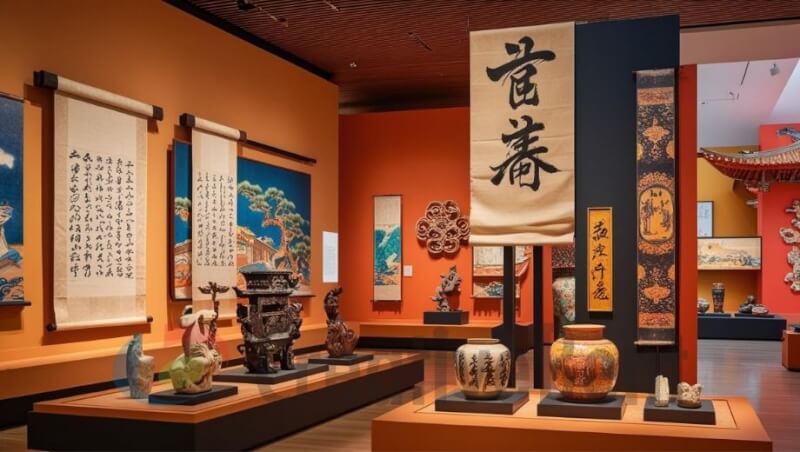Asian art has captivated viewers for centuries due to its wide set of customs and cultural influences. Asian art reflects the continent’s rich and diverse history and legacy, from the skill of Chinese calligraphy to the vibrant colours of Indian miniatures. This special piece takes us on an exploration of Asian art, blending traditional and modern elements.

Old Customs
Asian art has a rich and long history that spans thousands of years. The region’s artistic legacy is as diverse as it is ancient, ranging from the great temples of Angkor Wat to the cave paintings of ancient China. From the Han dynasty to the Mughal Empire, each civilisation contributed unique iconography, methods, and aesthetic sensibilities to the rich fabric of Asian art.
Important Art Forms
Painting, sculpture, weaving, ceramics, and architecture are examples of Asian art’s diverse artistic disciplines and media. Traditional art forms, such as woodblock printing, ceramics, and ink-wash painting, have evolved to reflect community values, religious beliefs, and intellectual traditions over time.
Cross-cultural Influences and Cultural Diversity
Asian art is distinctive because of the diverse cultural influences it has received and how those influences have been perceived. Trade routes such as the Silk Road have traditionally allowed for the exchange of artistic ideas, resources, and practices between the East and West. Hybrid art forms that arose from this cultural exchange include Islamic calligraphy, Buddhist sculpture, and Indo-Persian miniature painting, which continue to inspire researchers and artists today.
Modern Sources of Inspiration
Asian art incorporates global perspectives and current trends, as well as long-standing traditions. Asian modern artists get inspiration from a number of sources, including pop culture, traditional methods, political activism, and the internet age. Contemporary Asian art, from Ai Weiwei’s socially conscious sculptures to Yayoi Kusama’s avant-garde installations, honours the cultural legacy of the past while reflecting the complex reality of today.
Recognition and Impact Worldwide
In recent decades, Asian art has gained international recognition and appreciation. Major exhibitions, art fairs, and museum collections dedicated to Asian art have highlighted the region’s artistic achievements and cultural contributions. Asian artists are gaining global recognition as a result of their remarkable achievements, which include commissions, residencies, and awards.
Learning about Asian art is more than just an analysis of artistic processes and aesthetics; it is an exploration of the spirit and soul of one of the world’s most lively and diverse cultures. Asian art reflects the creative vigour, artistic innovation, and cultural history of Asia, referencing both ancient traditions and modern inspirations. Exploring and celebrating the richness of Asian art allows us to gain a deeper knowledge of its innovation and uniqueness, which characterise this dynamic and ever-changing artistic tradition.




